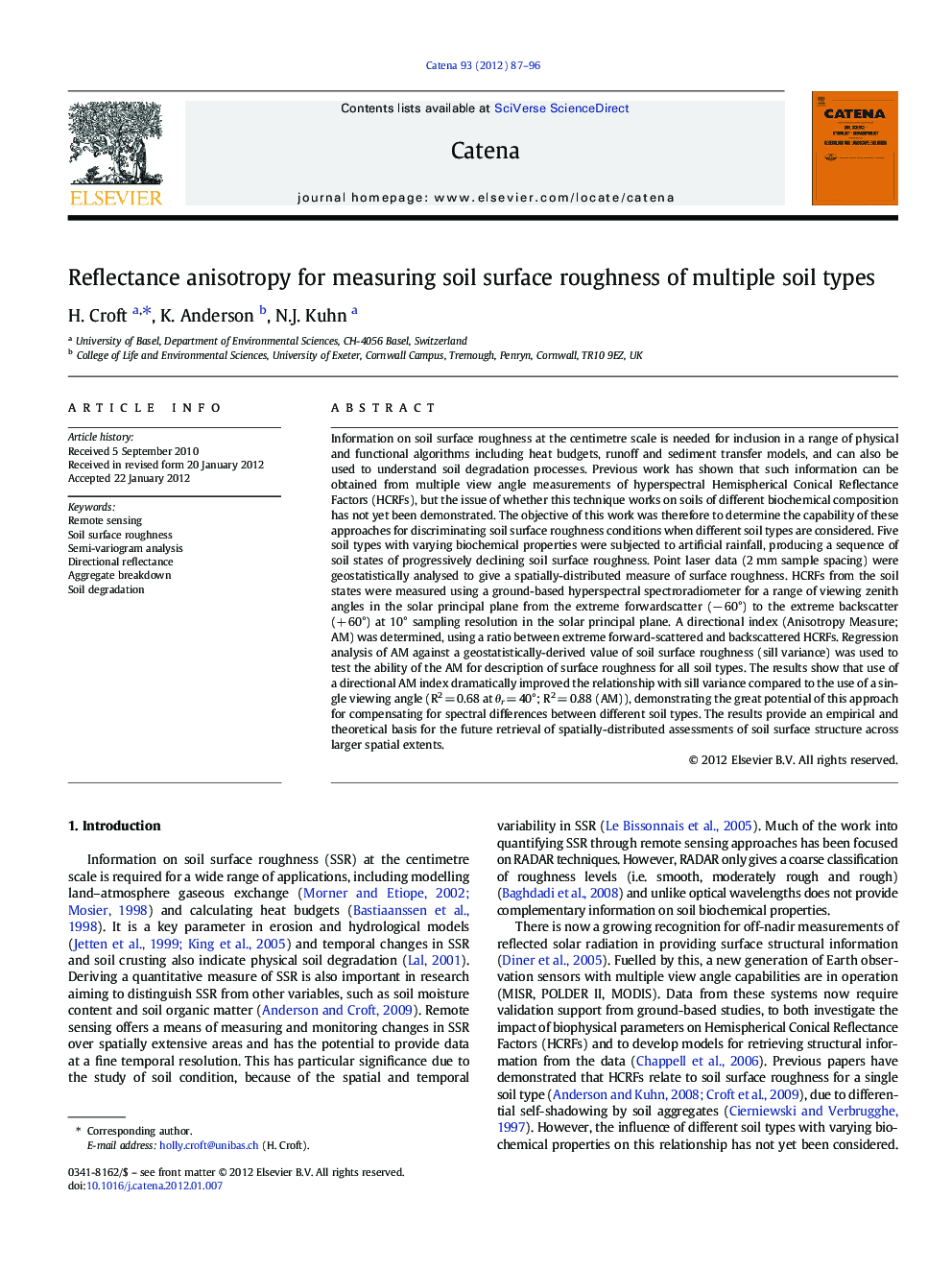| کد مقاله | کد نشریه | سال انتشار | مقاله انگلیسی | نسخه تمام متن |
|---|---|---|---|---|
| 4571877 | 1629259 | 2012 | 10 صفحه PDF | دانلود رایگان |

Information on soil surface roughness at the centimetre scale is needed for inclusion in a range of physical and functional algorithms including heat budgets, runoff and sediment transfer models, and can also be used to understand soil degradation processes. Previous work has shown that such information can be obtained from multiple view angle measurements of hyperspectral Hemispherical Conical Reflectance Factors (HCRFs), but the issue of whether this technique works on soils of different biochemical composition has not yet been demonstrated. The objective of this work was therefore to determine the capability of these approaches for discriminating soil surface roughness conditions when different soil types are considered. Five soil types with varying biochemical properties were subjected to artificial rainfall, producing a sequence of soil states of progressively declining soil surface roughness. Point laser data (2 mm sample spacing) were geostatistically analysed to give a spatially-distributed measure of surface roughness. HCRFs from the soil states were measured using a ground-based hyperspectral spectroradiometer for a range of viewing zenith angles in the solar principal plane from the extreme forwardscatter (− 60°) to the extreme backscatter (+ 60°) at 10° sampling resolution in the solar principal plane. A directional index (Anisotropy Measure; AM) was determined, using a ratio between extreme forward-scattered and backscattered HCRFs. Regression analysis of AM against a geostatistically-derived value of soil surface roughness (sill variance) was used to test the ability of the AM for description of surface roughness for all soil types. The results show that use of a directional AM index dramatically improved the relationship with sill variance compared to the use of a single viewing angle (R2 = 0.68 at θr = 40°; R2 = 0.88 (AM)), demonstrating the great potential of this approach for compensating for spectral differences between different soil types. The results provide an empirical and theoretical basis for the future retrieval of spatially-distributed assessments of soil surface structure across larger spatial extents.
► Soil biochemistry affects baseline reflectance factors; reducing the soil structural signal.
► Directional reflectance index can overcome soil biochemical differences.
► Soil surface roughness strongly related to directional reflectance index for multiple soil types.
► Wavelength dependency of soil surface roughness and reflectance reduced by directional index.
Journal: CATENA - Volume 93, June 2012, Pages 87–96